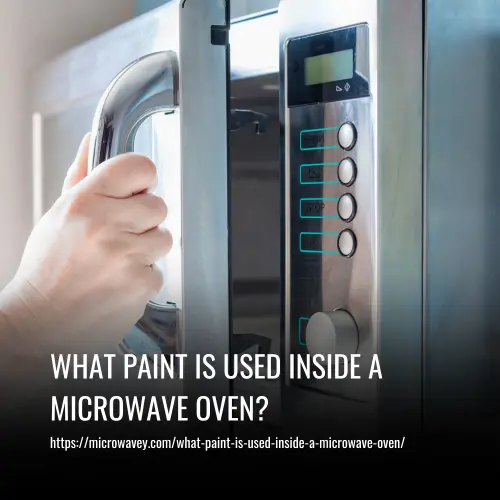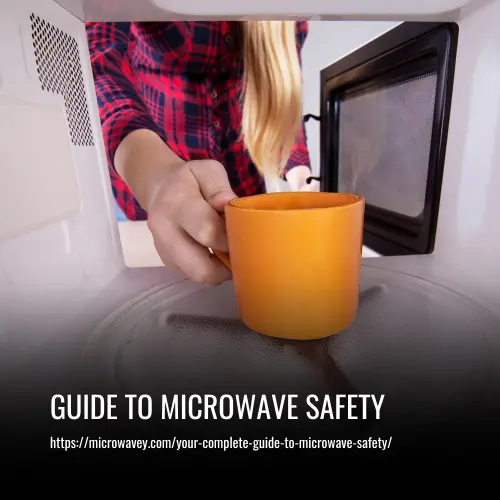Properly Disconnect Your Oven From The Electrical Source
As an electrical engineer, I’m often asked how to properly disconnect an oven from its electrical source. It’s a critical task that must be done with care and accuracy. Failure to do so can result in serious damage or even injury.
In this article, I’ll provide detailed instructions on how to safely disconnect your oven from the power grid in order to avoid any potential risks. It’s important to note that different types of ovens require slightly different steps for proper disconnection. This includes gas units as well as electric ones; each type needs its own unique approach when it comes to turning off their respective sources of energy.
By following my guidelines, you should have no trouble ensuring that your oven is disconnected correctly and avoiding any unnecessary risk.
Preparation And Safety Checklist
It is important to explore all options before attempting any electrical work.
For example, when disconnecting an oven from its electric source it may seem like a simple task; however, there are some safety precautions that must be taken into consideration.
As an experienced electrical engineer, I always take the time to make sure my environment is safe for me and anyone around me by double checking the power supply has been turned off at the breaker box. Furthermore, I ensure the plug on the appliance itself is not connected to a power outlet in order to avoid any potential hazards.
It’s essential to remember that even if you think something might be disconnected from its power source, there could still be electricity running through the device due to unseen wiring connections or other internal components of the system.
Taking these steps allows us to complete our project with confidence knowing we have done everything possible to keep ourselves and others safe while exploring our options and taking necessary safety precautions.
Shutting Off The Main Power
Now that we have completed the Preparation and Safety Checklist, it is time to shut off the main power for your oven.
Before beginning this process, it is important to do a power testing so you can be sure that all electrical sources are properly disconnected from the appliance. This step should involve turning off any circuit breakers connected to the oven before unplugging its cords or disconnecting anything else related to electricity within the unit.
Once these steps have been taken, you may proceed with removing cords and other connections associated with the oven’s power source. As always, safety should be your top priority during this procedure – wear protective clothing and avoid contact with metal parts at all costs.
After successfully completing this task, your oven will be safely disconnected from its electrical source.
Disconnecting The Oven’S Power Cord
No matter what type of oven you have, disconnecting the power cord is an important safety step that must always be taken before attempting any maintenance or repairs.
Depending on where your oven was installed, the power cord may come in different types and lengths.
For instance, if your oven has a fixed installation point such as a wall outlet, then it will most likely use a standard two-pronged plug with three feet of cable length.
On the other hand, if your oven is mobile and can be moved around freely between rooms, then you may find a longer four-foot extension cord connected to the appliance itself.
Regardless of which one applies to you, both types should be handled with care when unplugging from their respective outlets.
Turning Off The Gas Supply
With the power cord disconnected, it is time to move on to turning off the gas supply.
Inspecting valves and checking seals are essential steps in this process. By inspecting the main control valve, you can ensure that all of the gas lines leading into and out of your oven have been properly deactivated. Furthermore, examining any airtight seals will help make sure no gas leaks exist throughout your oven’s inner workings.
After confirming that the valves have been shut off and the seals are secure, resetting them should be a simple task if ever needed in the future. Take care to label each valve with its corresponding location in order to maintain clarity when working with these components again later down the line.
Finally, detach any removable hoses or pipes connected to your oven before completely disconnecting it from the electrical source for safe measure.
Unplugging The Oven From The Outlet
When unplugging the oven from the outlet, it’s important to take safety precautions and ensure the cord is properly disconnected. To do this, one should use a firm grip on the plug and pull it straight out, avoiding any jerky movements.
Unplugging The Cord
To properly disconnect your oven from the electrical source, you need to unplug its cord.
Before doing so, make sure that it is secure and not in a way that could be tripped over or snag on something else.
Once unplugged, carefully coil up the cord and store it out of reach for safekeeping.
This will ensure your kitchen appliance does not pose any risk of electric shock or fire hazard when no one is using it.
Safety Precautions
It is important to take the necessary safety precautions when unplugging an oven from an outlet.
Electrical hazards can be present, so it’s a good idea for electrical engineers to wear personal protective gear such as insulated gloves and goggles during this process.
Additionally, individuals should keep their body away from any exposed wires or terminals while disconnecting the appliance from its power source.
By following these rules, you can ensure that all steps are taken to prevent potential electric shock or fire hazard.
Disconnecting The Pilot Light
The pilot light is a critical element of the oven’s electrical source, and must be disconnected properly in order to ensure safe usage. To disconnect the pilot light there are several steps that should be taken:
| Step | Action Required | Tools Needed |
|---|---|---|
| 1 | Shut off gas supply valve | Wrench |
| 2 | Disconnect appliance from gas line | Pliers |
| 3 | Prevent leaks | |
| 4 | Seal connections |
Firstly, shut off the gas supply valve with a wrench. Secondly, use pliers to disconnect the appliance from the gas line. Thirdly, prevent any potential leaking by checking for any loose fittings before sealing all connections. Lastly, make sure all tools used are tested for proper operation prior to being put away.
This way you can guarantee that your oven has been safely disconnected from its electrical source and will remain so until it is reconnected using the same method.
Verifying That All Connections Are Disconnected
As an electrical engineer, it is important to ensure that all connections are properly disconnected before moving onto the next step. This process can be tedious and time consuming but must not be overlooked as improper disconnection of any power source could lead to serious consequences.
It is essential that you secure wires and inspect any connection points for potential hazards prior to unplugging your oven from the mains socket.
It is also vital to check for continuity with a multimeter in order to make sure there is no current running through the circuit. If everything checks out, then you can safely remove the plug from the wall outlet knowing that there will be no accidental shocks or malfunctions when reconnecting at a later date.
The utmost care should always be taken when dealing with electricity so don’t let yourself forget this crucial step while performing maintenance on your oven!
Cleaning The Oven’S Interior
Once you have properly disconnected the oven from the electrical source, it’s time to assess its interior. Cleaning solutions and maintenance tips should be taken into account when cleaning your oven’s interior.
To begin, unplug any racks or other removable surfaces, as well as knobs for temperature control. Once these are removed, use a damp cloth soaked in an all-purpose cleaner and wipe down all internal surfaces of the oven. Make sure that no residue is left behind before replacing all components back in their original placements.
It is also important to check whether there are any cracks or warps inside the oven that may need further attention or repairs. If this is the case, contact a professional electrician who can help resolve any issues within the body of your appliance so that it remains safe for long-term use.
As always, make sure to regularly inspect your device throughout its lifespan to ensure optimal functionality and safety at all times.
Replacing The Oven’S Knob And Shield
The task of replacing the oven’s knob and shield can be daunting, but with a few simple steps you will have your kitchen appliance looking brand new.
First off, it is absolutely essential to properly disconnect your oven from the electrical source before beginning any work. This could mean unplugging the power cord or turning off the circuit breaker at the main panel. To ensure safety during this process, always refer to manufacturer’s installing instructions as well as wiring diagrams if need be.
Once disconnected, you can begin unscrewing the old knobs and shields while taking care not to damage them in case they are still usable. You can then replace them by following the reverse procedure of how you took them out – first screwing in the shielding followed by inserting and tightening up each knob one-by-one until all is secure.
It may take some time to get everything back in place, but when done correctly there should be no issues operating your newly upgraded oven!
Troubleshooting Common Issues
Troubleshooting common issues with ovens can be daunting, especially when it comes to electrical problems. If the oven is not heating up properly or there are power fluctuations, these may indicate an issue with the wiring of the oven.
To resolve these potential hazards, one should practice proper disconnection from the source and follow a few simple steps:
Check for any loose connections between the appliance and its corresponding power source. Wires that have become dislodged or frayed need to be replaced in order to ensure safe operation.
Inspect all components such as circuit breakers, switches, fuses and cords – any faulty parts must be removed and changed in order to restore heat regulation within the unit.
Ensure that all wires remain disconnected until repairs have been made; then reconnect only after testing has been completed successfully. This will help prevent further damage due to voltage surges or inadequate insulation of exposed wires.
Overall, taking precautionary measures ensures no harm is done while attempting to troubleshoot your oven’s electrical problems. By following safety protocols and performing routine maintenance checks, you’ll be able to maintain optimal performance for years to come!
Conclusion
It’s important to properly disconnect your oven from the electrical source in order to ensure safety and longevity. By following this guide, you can easily do it yourself with a few simple steps:
- Shut off the main power
- Disconnect the oven’s power cord
- Turn off the gas supply
- Unplug the oven from the outlet
- Verify that all connections are disconnected
- Clean the oven’s interior
- Replace any knobs or shields
With these steps completed I guarantee you will have an easy-to-use appliance that is as good as new!
By taking care of your oven and ensuring proper maintenance through regular cleaning and disconnection procedures – you’ll be able to use it for years without issue. It really is like having a brand new oven every time you plug it back in!
Plus, if anything were ever to go wrong with your oven while its being used you won’t even need to call up a repairman; by doing a quick checkup on all of your connections first you could save yourself so much time and money! So make sure to always follow this procedure when needed – it’s totally worth it.


